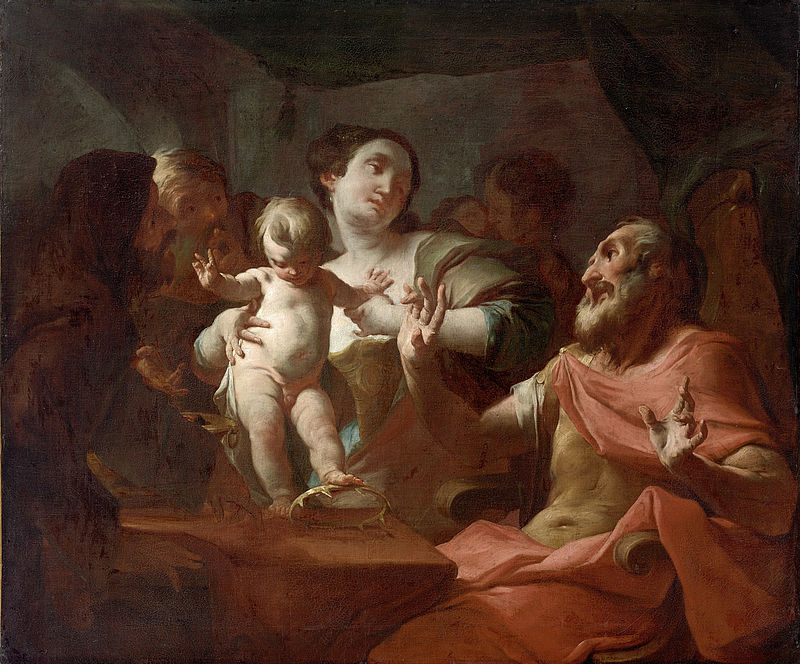The Young Moses in front of Pharaoh
Framesize 127.00 x 148.50 x 5.50 cm
The story behind The Young Moses in front of Pharaoh is taken from the Apocrypha, Flavius Josephus, Antiquities of the Jews (book 2, chapter 9, 7/232–237).
Pharaoh’s daughter finds Moses in a cradle by the river. Since she has no legitimate heir, she adopts him as her son, and when he is three years old she brings him to her father and asks him to make the boy her successor. Pharaoh jokingly sets his diadem on the boy’s head, but Moses throws itto the ground, rolls it around and tramples on it.
Troger shows the moment when Moses, as in childish play, treads on the crown. Horrified, the sacred scribe – who once foretold that the birth of a Hebrew boy would bring about the downfall of Egyptian rule – interprets this mockery of the royal dignity as confirmation of his prophecy, and urges Pharaoh to kill the boy who looks to usurp power. Pharaoh, however, is deterred by the adoptive relationship and by divine afflatus. According to a different tradition evidently familiar to Troger, an angel in the form of a sacred scribe causes the crown and glowing coals to be held out to Moses, who takes the brightest coal. Burns on his hands and tongue cause a permanent speech impediment, but spare him death. Troger makes selective use of light and shade. Moses and Pharaoh, both shown with expansive baroque gestures, are placed beside the king’s daughter in the light. The vessel of coals, overlapped by the arm of a scribe, together with the vague shapes of the witnesses in the background – here again baroque chiaroscuro – are in the darkened zone.
DUCKE Astrid: Troger Paul, The Young Moses in front of Pharaoh, in: DUCKE Astrid, HABERSATTER Thomas, OEHRING Erika: Masterworks. Residenzgalerie Salzburg. Salzburg 2015, p. 112


